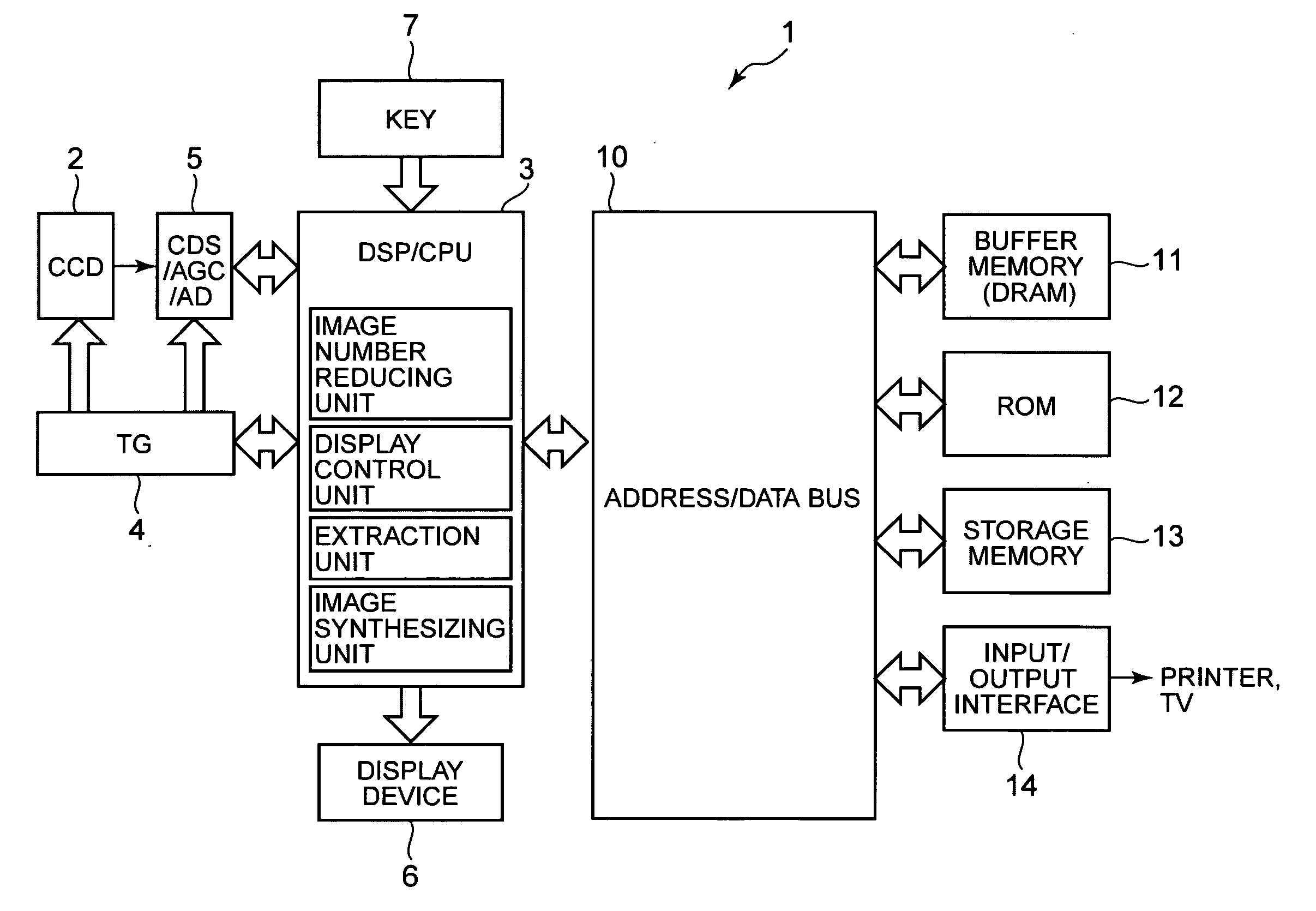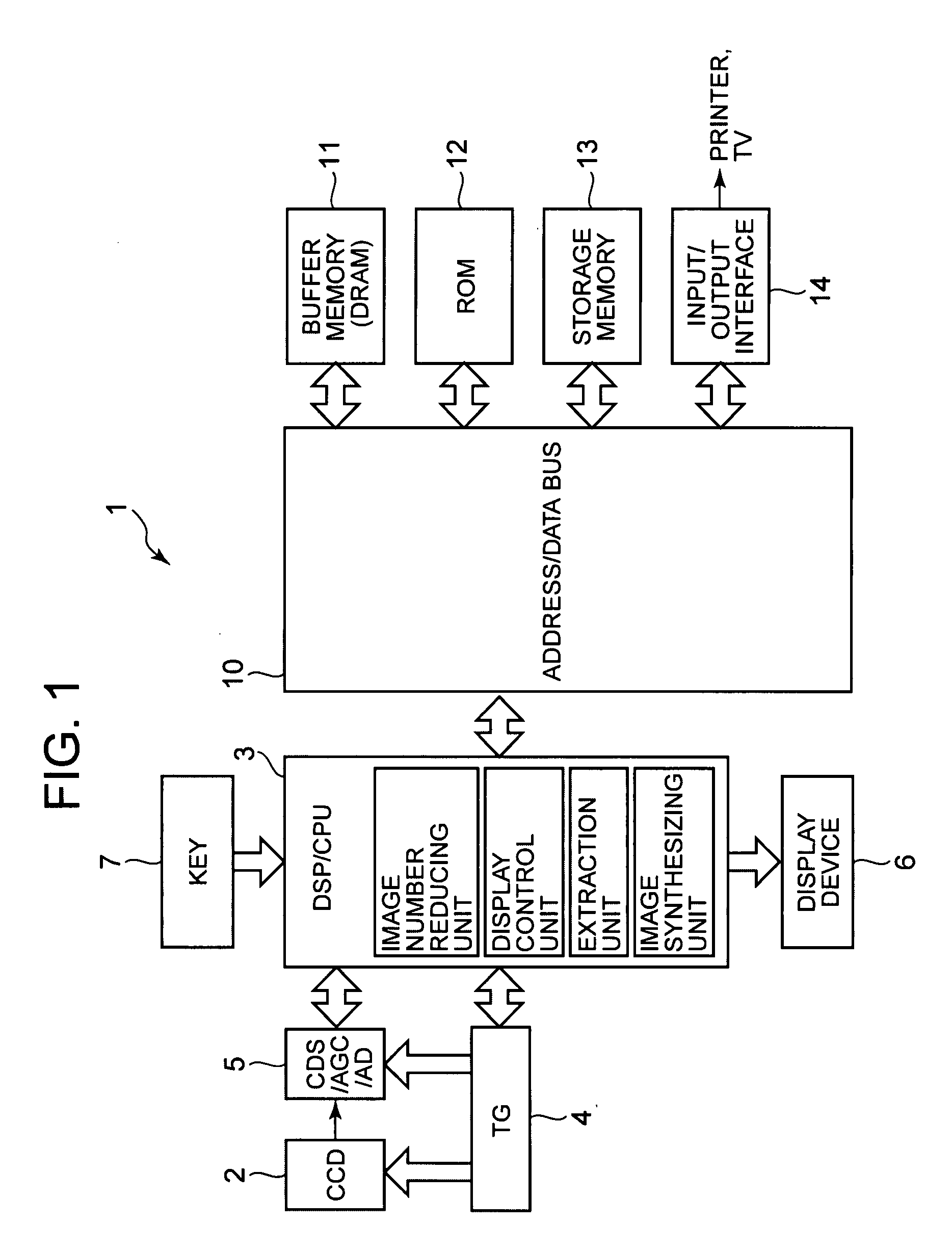Image pickup device having quickview display function
- Summary
- Abstract
- Description
- Claims
- Application Information
AI Technical Summary
Benefits of technology
Problems solved by technology
Method used
Image
Examples
first embodiment
[0037]FIG. 3 is a flowchart showing the processing procedure of the quickview processing (step S18) in the present invention. A counter N in the DSP / CPU 3 is set to an initial value 1 (step S101), and another counter L is set to 4 times of the value of counter N (step S102). Additionally, the Lth frame of image data among the above-described frame data is extracted from the buffer memory 11 (or alternatively the storage memory 13) (step S103), and an image based on this extracted image data is displayed by the display device 6 (step S104). This image display is maintained until a predetermined time (for example, 1 second) has passed (step S105). If the predetermined time has passed (step S105; YES), it is determined whether or not (L≧Nmax−3), in other words, when the processing is conducted to set (L=N×4) in the next step S102, it is determined whether or not L will exceed the total number of image data frames (Nmax) in the above-described frame data (step S106). Additionally, until...
second embodiment
[0041]FIG. 5 is a flowchart showing the processing procedure of the quickview display processing (step S18) in the present invention. A first frame of image data among the above-described frame data is read from the buffer memory 11 (or alternatively the storage memory 13) (step S201), and furthermore, the next (initially, the second) frame of image data is also read (step S202). Subsequently, the images of the image data read in step S201 (or alternatively the image data read in the previous iteration of step S202) and the next image data read in step S202 are compared (step S203), and it is determined whether or not the difference (change) between the two images meets or exceeds a set value (step S204). If the difference between the two images does not meet the set value, i.e., in the case where the change between adjacent images in the consecutive frame data is small (step S204; NO), the process proceeds to step S207 without conducting the processing in steps S205 and S206.
[0042]...
third embodiment
[0044]FIG. 6 is a flowchart showing the processing procedure of the quickview display processing (step S18) in the present invention. A counter N in the DSP / CPU 3 is set to an initial value of 1 (step S301), and frames of image data (a, b, c, d), corresponding to the ordinals (N˜N+3) as indicated by this counter N, are read from the above-described frame data (step S302). Subsequently, by calculating (L=[a+b+c+d] / 4), (N˜N+3) frames of image data (i.e., 4 frames) are synthesized at a weight of ¼, thereby creating a single frame of synthesized image data L (step S303). Subsequently, an image based on the synthesized image data L is displayed by the display device 6 (step S304). This image display is maintained until a predetermined time (for example, 1 second) has passed (step S305). If the predetermined time has passed (step S305; YES), it is determined whether or not (N+4>Nmax); in other words, when the processing is conducted to set (N=N+4) in the next iteration of step S307, it is...
PUM
 Login to View More
Login to View More Abstract
Description
Claims
Application Information
 Login to View More
Login to View More - R&D
- Intellectual Property
- Life Sciences
- Materials
- Tech Scout
- Unparalleled Data Quality
- Higher Quality Content
- 60% Fewer Hallucinations
Browse by: Latest US Patents, China's latest patents, Technical Efficacy Thesaurus, Application Domain, Technology Topic, Popular Technical Reports.
© 2025 PatSnap. All rights reserved.Legal|Privacy policy|Modern Slavery Act Transparency Statement|Sitemap|About US| Contact US: help@patsnap.com



